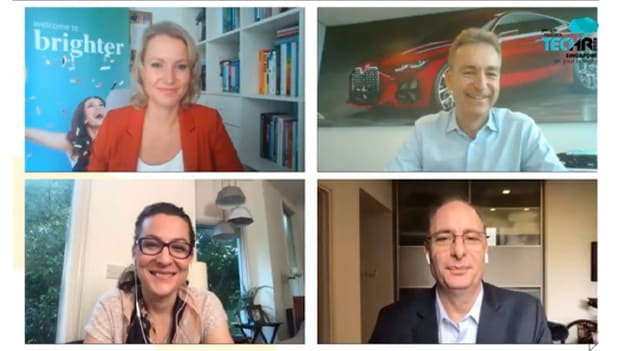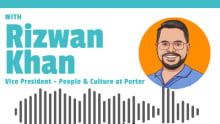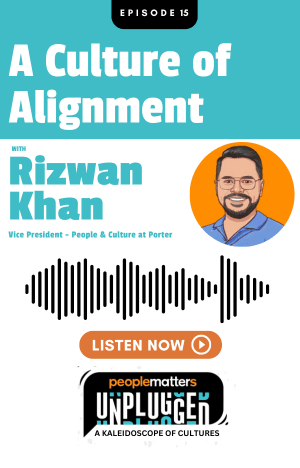Learning points from COVID-19: The CEOs' thoughts

Most of a year into the COVID-19 pandemic, business leaders have found their individual ways of coping with the industry and even organization-specific challenges they face. At People Matters TechHR 2020, a power panel of CEOs from around the Asia Pacific shared the changes that stand out to them, and the solutions they have identified.
One major shift underlying much of the discussion is around customer expectations. Christopher Wehner, MD of BMW Group Asia, shared how buyer behavior has undergone a complete change as a result of COVID-19: already hit very hard by the pandemic, the automobile industry is now also having to deal with customers no longer wanting to visit showrooms, interact physically with staff, or even touch the surface of cars. And this in turn has driven the industry towards digitalization at a terrific pace.
"Digitalization was already a key trend in the automobile industry, but COVID-19 accelerated it tremendously," he said, giving the example of how, 5 years ago, customers would visit a showroom an average of 5 times before buying a car; 2 years ago the number had fallen to 2.8; and now, he estimated, the number of visits would be less than 2. As a result, BMW has had to digitalize a very large proportion of its customer service processes, right down to contactless delivery and servicing.
Even in service-focused fields that deal less with physical products, client behavior is changing. Peta Latimer, CEO of Mercer Singapore, pointed to how the demand for consulting services has gone from best practices and capacity, to subject matter expertise, ideas, and scalable delivery. More importantly, the time lapse between vendor selection and project start date has gone from perhaps one week to a "significant delay". "We had to be very ready, because we had to carry extra bench strength during that time, with a dedicated team ready to go at any moment the client decided to procure," she said of Mercer's pre-COVID setup. Now, however, it's no longer viable to maintain the extra capacity for the extended wait, and there has been what she describes as "a fundamental shift in the way we think about resourcing."
The people management response to these shifts
Adjusting to the new customer behavior has sometimes involved unusual solutions and interesting outcomes, according to the panelists. Latimer shared that Mercer has implemented a "talent exchange platform" to deal with its excess talent capacity, allowing it to buy or borrow talent from across the globe as needed, and this has had benefits all around. The company gets to match its internal talent demand and supply more effectively, and the consultants get a much greater diversity of exposure across projects, portfolios, and locations. This even extends to swapping talent with competitors: Mercer, she said, has teamed up with Accenture to deploy talent to other employer markets where needed.
"When we brought best practices to our clients, it was because we'd done it before and we had credentials and strong methodology," she observed. "Now, we need to be able to bring good ideas and solutions."
"Our people can no longer rely on learning on the job. They have to broaden their experience, spend more time reading, access many more learning platforms, talk to the clients."
In essential sectors such as IT, the focus shifted towards how best to support other essential services such as healthcare, said Duncan Hewett, SVP & GM, Asia Pacific & Japan, VMware. As a result, collaboration is now a necessity. "I think we will move to a hybrid model: we will have dive-in areas, collaboration areas where we bring our team together with customers to solve problems, as well as an extended area around engaging virtually," he suggested.
This fresh emphasis on collaboration, along with the shift to virtual engagements, has granted both companies and customers much greater access to worldwide expertise, including top leadership. For instance, Hewett shared that VMware's top leadership used to visit the Asia Pacific region and interact with customers perhaps five times a year, but now that meetings are being conducted virtually, the CEO is able to spend a great deal more time on customer engagements.
Managing the culture change for an adaptable organization
Innovative solutions are one thing, but getting people to buy into them on a long-term basis is a challenge on its own. And it's critically important to listen to people and get them involved and engaged in solutions, Wehner pointed out. "First of all you have to listen to colleagues, then define together the strategy and where you want to be," he said.
"For me, the most important cultural value in the company is trust—trust employees to find the right solutions for the targets you give them, and give them the responsibility for solutions."
Agreeing, Hewett said that leaders need to adopt the agile concept of making iterative changes along the journey, constantly engaging people to give feedback and adapting in response as the business goes. "The one thing that's really reinforced in the current environment is, it's a virtual environment," he noted. "You don't know what's happening behind the screen. That means you need more real-time engagement, and then to execute in sprints—smaller steps."
To really drive change, he added, it is extremely important to have clarity around the organization's messaging, especially internally.
"One of the things you need to love in your organization is your communications specialist," he remarked. "Because how to communicate effectively has never been more important."
And underpinning these things, said Latimer, is the need to ensure that "unsexy core stuff" like policies and processes are reworked and properly aligned to the broader strategic changes being made. "Culture is also part of the unwritten rules—how stuff gets done," she said. "It's very systemic. You can drive the right values and behaviors, you can set the vision, but if people are not focusing on process re-engineering and simplification, if their day to day job is still following old-school processes or misaligned processes, you will undo everything you're trying to accomplish."
What do we need to start and stop doing?
The panelists were unanimous that, to stay ahead amid the changes of today, organizations simply cannot afford to cling to the past—whether in the form of traditional workplace practices like spending the 9-5 workday in the office, or placing top priority on compliance with processes. Instead, they need to take a progressive approach: be more pro-active about shaping what work looks like, trust people to carry out their responsibilities, be open to innovation and new possibilities.
"Stop focusing on when and where your people work," Wehner said—pointing out that people will do much better when given the full flexibility to get their job done. "Start defining more platforms for social interaction. Continue listening to your colleagues and giving them responsibility."
"Stop leading from a compliance perspective," was Latimer's take. "Start leading and owning the conversation about the future of work."
And stop waiting for things to return to normal, said Hewett. "Stop believing that [the old normal] is going to come back. Look for engagement and innovation. Continuing is about confidence and leadership."














